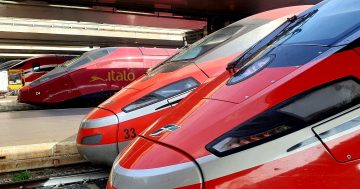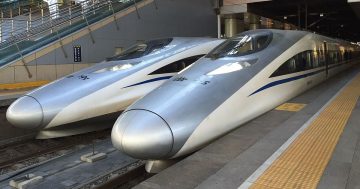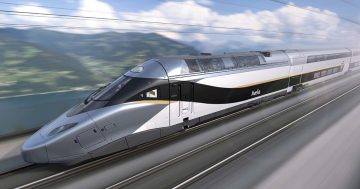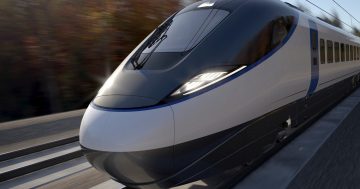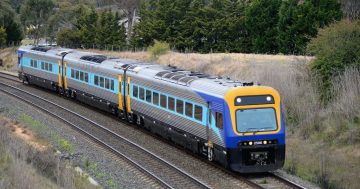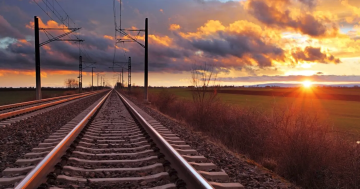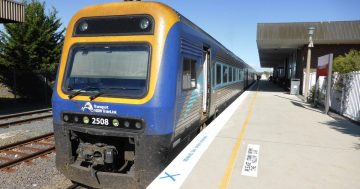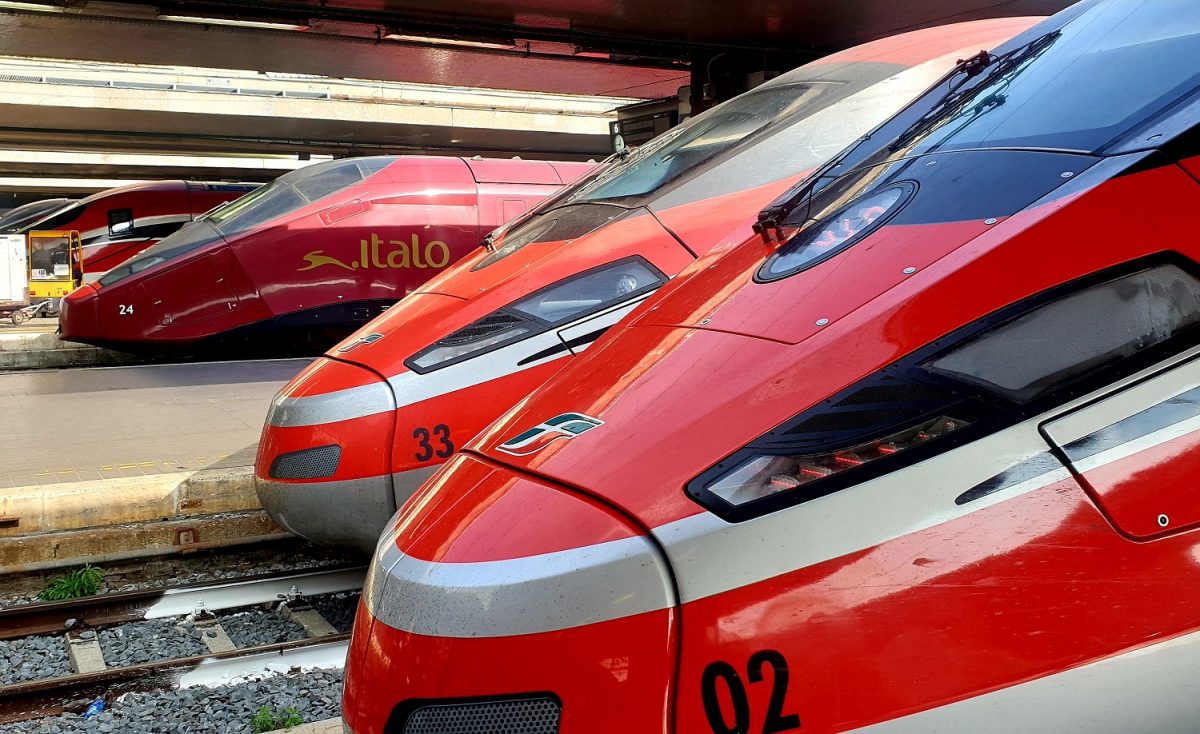
Le Frecce high-speed trains stand ready at Rome’s Termini Stazione. Photo: Andrew McLaughlin.
A not-for-profit organisation has proposed a multi-stage plan to resurrect the concept of a high-speed rail network in Australia’s south-eastern states.
Fastrack is a group of three planners and consultants who claim high-speed rail could become a reality that could transform travel between and settlement patterns around Brisbane, Sydney, Canberra and Melbourne if it is built in manageable stages.
Retired transport and urban planner and Fastrack founder Dr Garry Glazebrook, retired consultant and member of the Town and Country Planning Association in Victoria Dr Ross Lowrey, and Syd Herron, a semi-retired aviation consultant who is a member of a number of transport advocacy groups, have released several reports in recent years, the most recent in May 2023.
They say the reports – the latest of which is titled Implications of high speed rail for Canberra and the Capital Region – have been produced with help from experts in engineering, planning, economics and transport systems, to provide solutions into specific aspects of high-speed rail in Australia.
The latest report comes after the Federal Government established the High Speed Rail Authority (HSRA) as a statutory agency in November last year to advise on, plan, consult with states and territories, and construct a high-speed rail system.
In February this year, the Federal Minister for Infrastructure, Transport, Regional Development and Local Government Katherine King started the recruitment process for the HSRA board.
The Fastrack report says a high-speed rail line from Sydney to Canberra would stimulate growth and economic development in Canberra and the Capital region. They say the Canberra line would be part of one of eight major stages, and could even be a viable project in its own right.
The eight stages of Fastrack’s Sydney to Melbourne plan are:
- An underground link from Sydney Olympic Park to Campbelltown, with the option to run fast trains on standard lines to Central
- A line from Campbelltown to a station south of Goulburn via Mittagong and Moss Vale on a new route that parallels the Hume Highway, and includes an option to cross over onto standard tracks to go into central Goulburn itself
- The line from Goulburn to a station north of Yass, which would include the spur line from Gunning to Canberra
- The line from Yass to a point southeast of Wagga Wagga, which includes an option to cross over into central Wagga Wagga
- The line from Wagga Wagga to Albury with a future option to bypass Albury
- The line from Albury to Shepparton
- Shepparton to Craigieburn on Melbourne’s northern outskirts via Seymour
- An underground section that goes into central Melbourne’s Southern Cross Station via Campbellfield
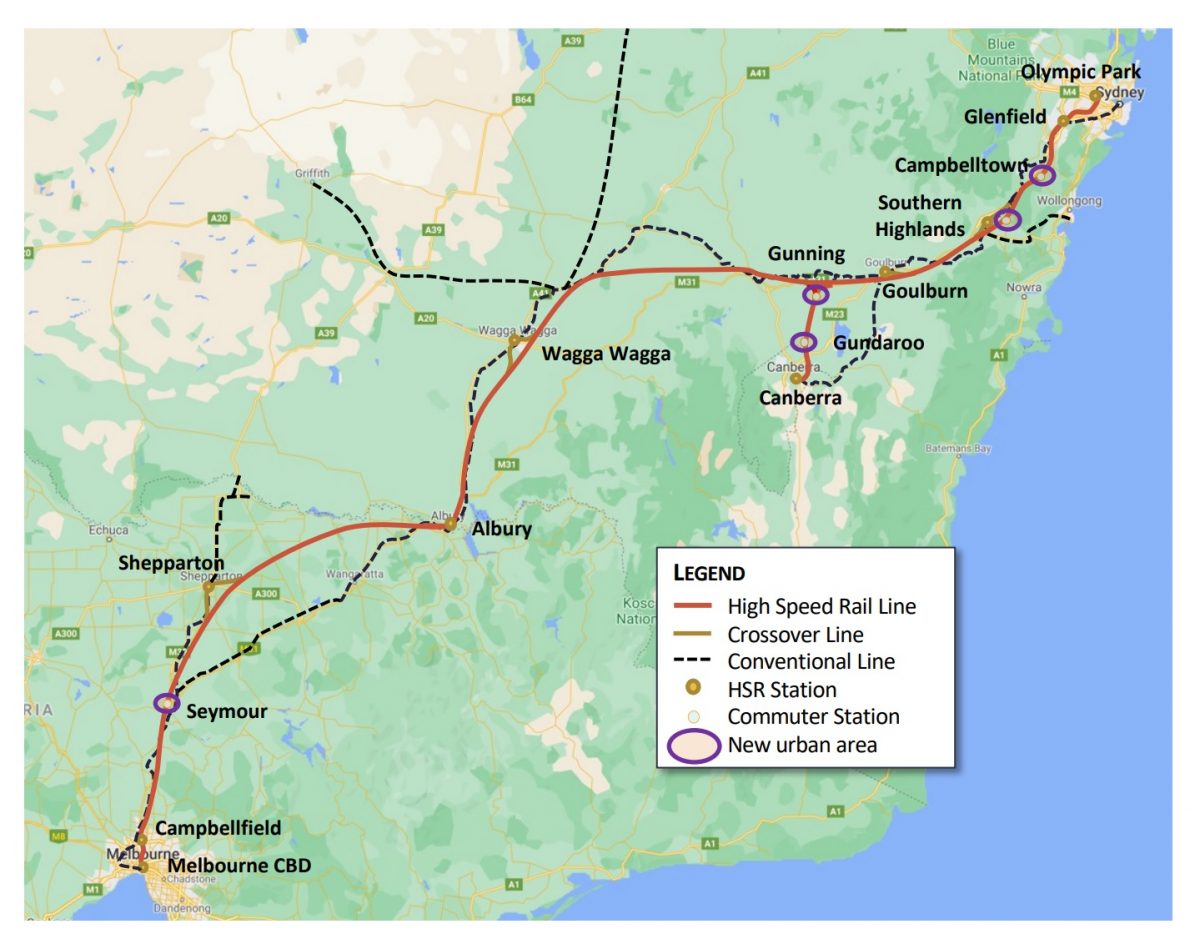
A map showing Fastrack’s proposed high-speed route from Sydney to Melbourne. Image: Fastrack.
Compared with the current XPT, which takes more than four hours to travel from Canberra to Sydney, Fastrack says an InterCity train running on a new Canberra spur line to the existing line at Gunning and travelling the rest of the way on the existing line would reduce that time to three hours, while an InterCapital high-speed rail service running all the way on a new dedicated line could drop that to as low as 90 minutes.
Rather than using the current rail corridor to Canberra from Goulburn, which involves negotiating Molonglo Gorge, the new spur line would run from Gunning via Gundaroo and Sutton, roughly parallel to Gundaroo Rd and Sutton Rd, cross into the ACT near Eaglehawk, and run down the Majura Valley parallel to the Majura Parkway before terminating between Canberra Airport and Duntroon.
The report cited regional cities of about 150,000 along high-speed rail lines in Italy (Novara), France (Avignon) and Spain (Lleida) as examples of areas where tourism, education, industry and development have been stimulated by better access afforded by a high-speed rail corridor.
To this end, the report says the Canberra region contains all the elements required for regional growth associated with new high-speed rail services.
The report’s authors said that, despite criticisms that high-speed rail for Australia is impractical due to our lack of population density compared with countries such as France and Japan, if the network is restricted to the southeast corridor between Brisbane and Melbourne, the population density supports the economics.
The report authors have recommended an action group be formed to lobby the Commonwealth for a high-speed rail link to Canberra. They say the group should develop a strategic plan on how a link would be implemented, how population growth along the corridor would be managed, and how the regional economy could be stimulated.












